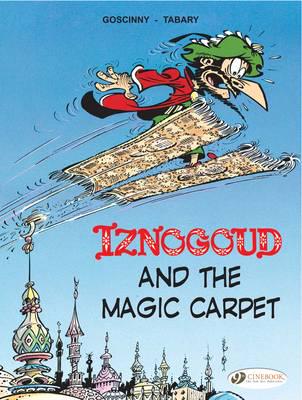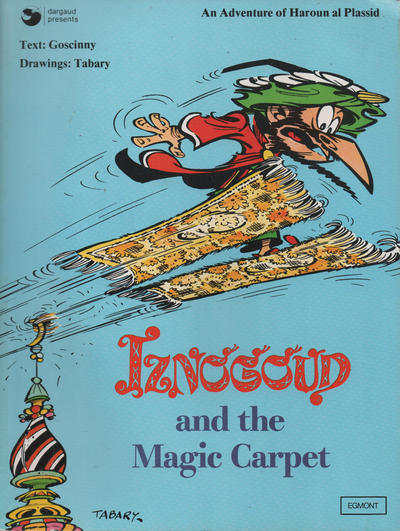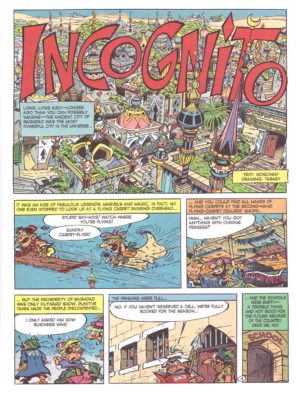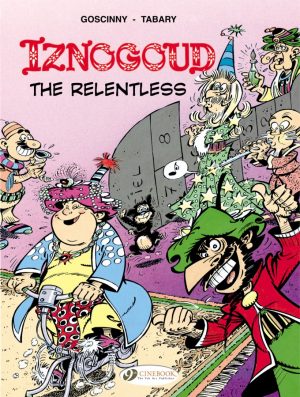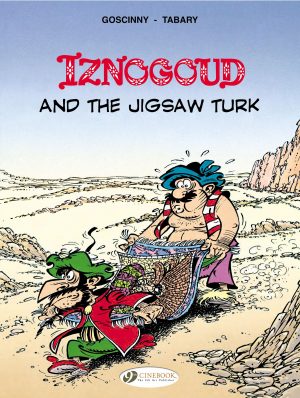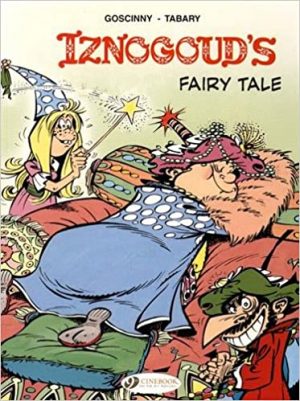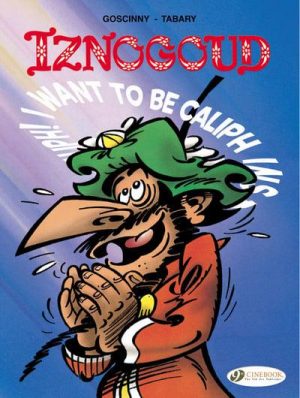Review by Andrew Littlefield
Previously issued in the UK by Methuen in 1980, Iznogoud and the Magic Carpet is now the sixth album in Cinebook’s welcome series of new English language translations of this popular French comic strip from the 1960s and 1970s. It is not to be confused with Iznogoud and the Magic Computer, the fourth Cinebook album in the series.
Every Iznogoud strip is essentially the same – wicked Grand Vizier Iznogoud plots in vain to install himself as ‘Caliph instead of the Caliph’ – but here, as always, writer René Goscinny, best known as the author of Asterix and Lucky Luke, delights in spinning out new variations on a familiar theme.
In lead story ‘The Magic Carpet’, Iznogoud hooks up with Indian fakir Khaledonyahn, whose remarkable flying rugs could finally help the Grand Vizier to depose the current Caliph of old Bagdad, Haroun Al Plassid. The strip opens in Peking at the time of the Yuan Dynasty, giving artist Jean Tabary further opportunity to draw the kind of ornately detailed cityscapes that he particularly excels at. This strip also features a cheeky walk-on appearance by Tintin’s Captain Haddock and Snowy in a couple of panels; a prime example of the meta-fictional hijinks that Goscinny always liked to indulge in.
‘Incognito’, with another great opening splash panel, has Iznogoud persuading the Caliph to assume the identity of a beggar so that he can walk through the streets of Bagdad unnoticed, leaving Iznogoud free to become the new Caliph. Needless to say, it’s Iznogoud himself who ends up the homeless person.
The self-explanatory ‘Tiger Hunt’ features some nicely cartooned jungle animals (although the shooting of endangered species as a comedy trope has probably run its course by now), while ‘The Box of Souvenirs’ features a magical camera that makes its subjects vanish forever. The final panel is actually a photo of Tabary, consigned to limbo by the very object he’s just drawn. The metaphorical implications are as plain as the ‘tache on the cartoonist’s face.
